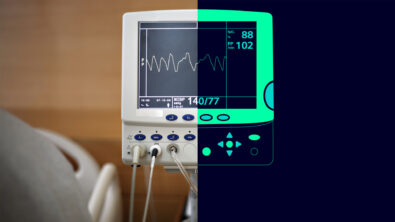Conquer medical device development complexity with advanced modeling tools

The complexity of medical device design can lead to siloed activities. Staying ahead of design challenges demands innovative approaches to collaboration.
As devices grow more intuitive and integrated, design engineers face the dual task of pushing boundaries in both technology and functionality. This necessitates tools that not only simplify complexities but speed up the development cycle, ensuring products reach the market faster and more efficiently.
Embracing advanced, comprehensive virtual product design tools provides an optimal pathway to achieving today’s design goals. These tools streamline the creation of 3D digital twins, accelerate decision-making processes and foster more effective collaboration across various teams.
Empowering designers with advanced mechanical and electrical systems
Siemens’ comprehensive suite of virtual product design tools dramatically transforms how medical devices are conceptualized and realized. The mechanical product design suite includes an integrated set of applications for developing 3D digital twins, enabling rapid and precise modeling of product designs.
Our suite facilitates an advanced design for manufacturing (DFM) approach, ensuring that every design move aligns with production capabilities. Similarly, the electrical system design tools integrate fully with mechanical computer-aided design (CAD) systems, providing a seamless environment for designing and routing complex wire harnesses. These capabilities reduce the need for physical prototypes, cutting down on both time and cost and reducing errors that might emerge in later stages.
Seamless integration across software platforms
In medical device development, software integration forms a crucial component of the overall design process. Siemens addresses this with software design tools that ensure real-time data synchronicity and seamless interaction between coding and modeling levels.
This model-based approach expedites the development process and enhances functionality verification and hazard elimination. Integration with application lifecycle management (ALM) platforms ensures that updates, accountabilities and project developments are seamlessly synchronized, which supports maintaining compliance and project transparency.
Revolutionizing collaboration and verification
Breaking down siloes between electronic computer-aided design (ECAD) and mechanical computer-aided design (MCAD) domains is fundamental for streamlined device design. Siemens’ electronic systems design software empowers teams to avoid costly redesigns through effective 3D virtual prototyping and real-time collaborative reviews.
Our platform supports co-design efforts across mechanical, software and electronic disciplines, reducing risks and ensuring a more integrated development approach. By enabling comprehensive data exchange and verification processes, the tool ensures that all design components are correctly constructed and perform as expected in the final product.
Drive Design Excellence with virtual design tools for medical device development
Siemens’ array of virtual design tools is specifically engineered to address the challenges unique to medical device development. By adopting these tools, MedTech design engineers can reduce development times, ensure higher product safety and performance and stay ahead of industry demands.
Read the e-book today to explore how Siemens’ comprehensive virtual product design tools can elevate your design processes and place you at the forefront of medical device innovation.
Ready to give medical device design software a test run? Sign up for a 30-day free trial.


